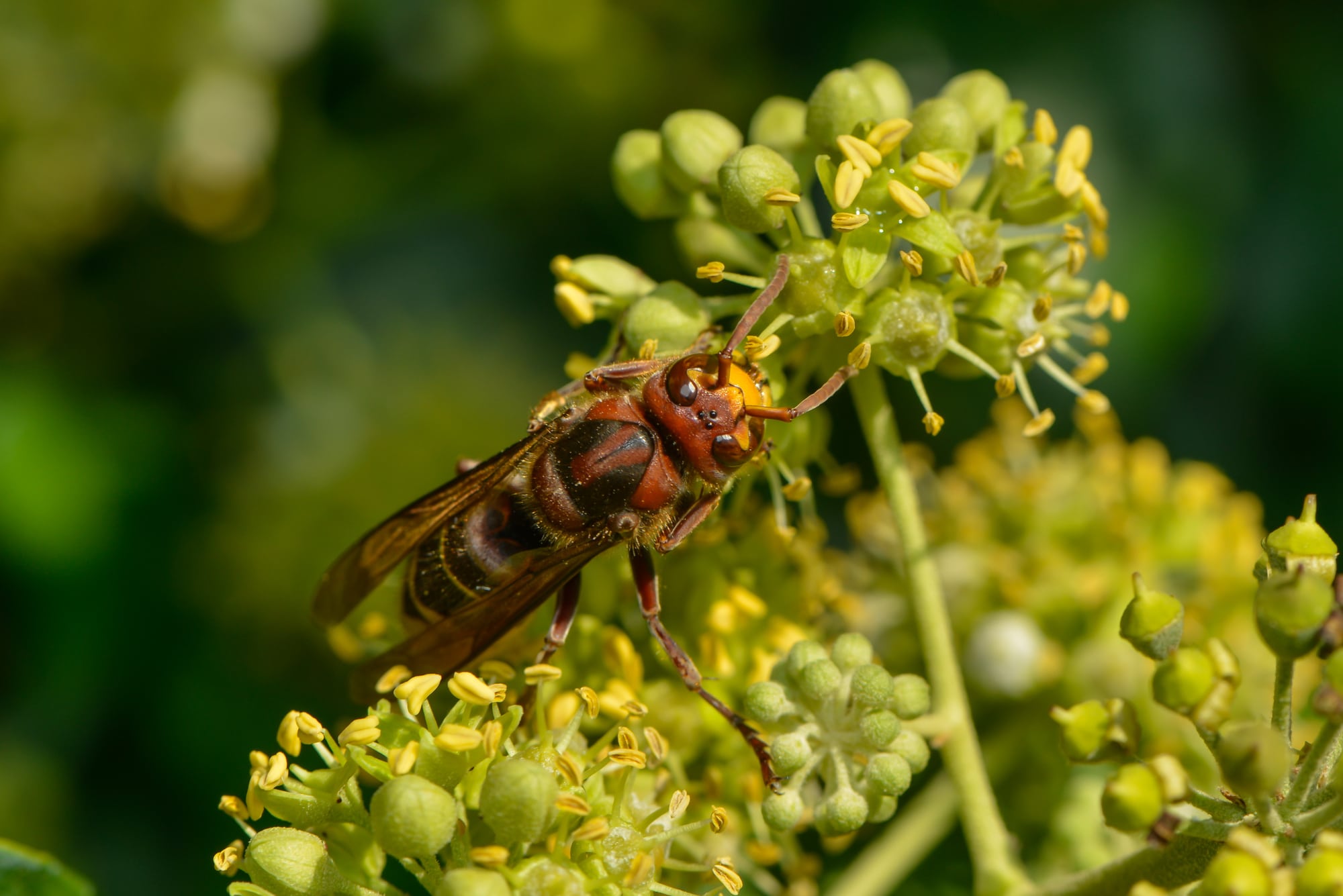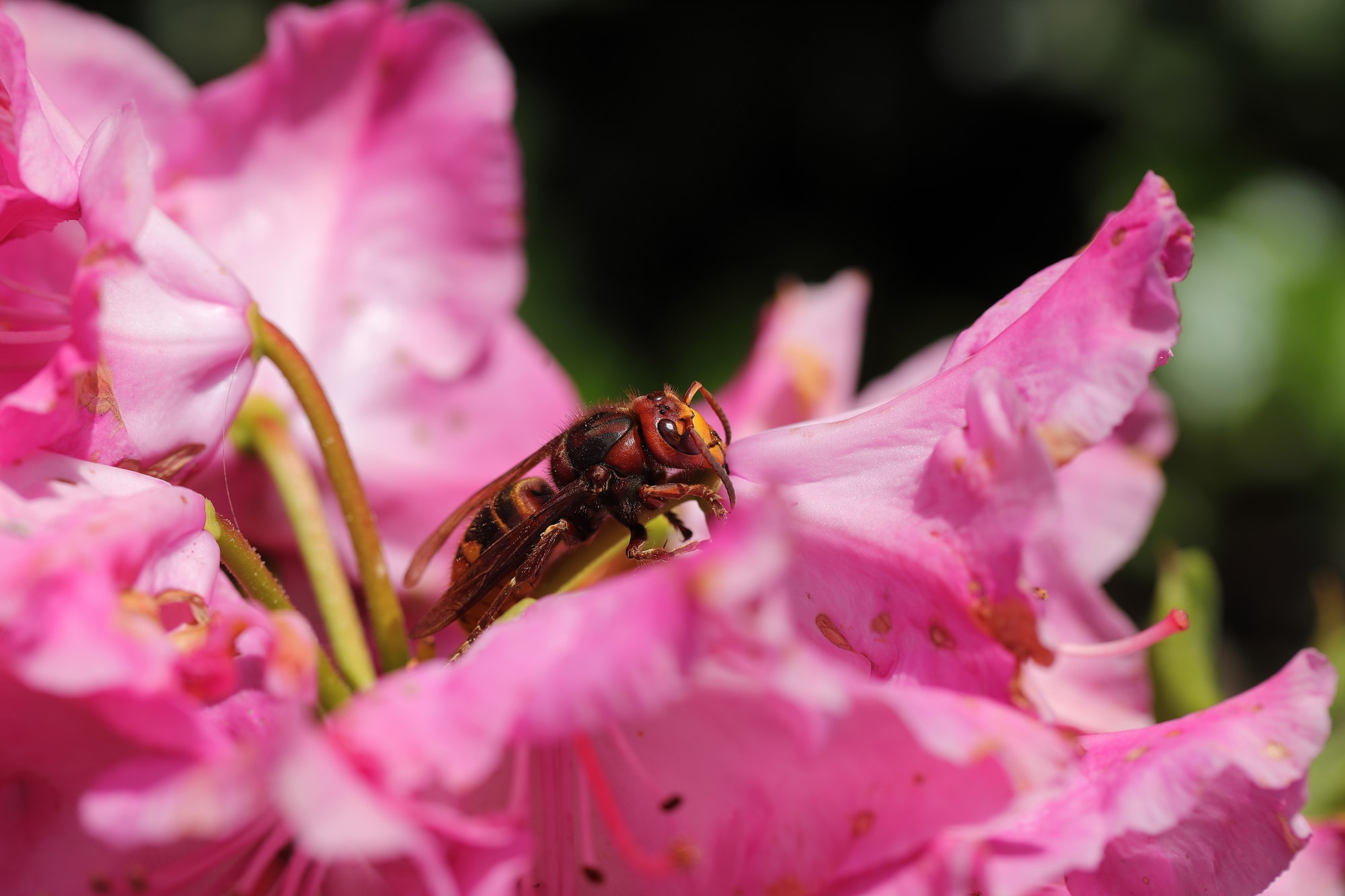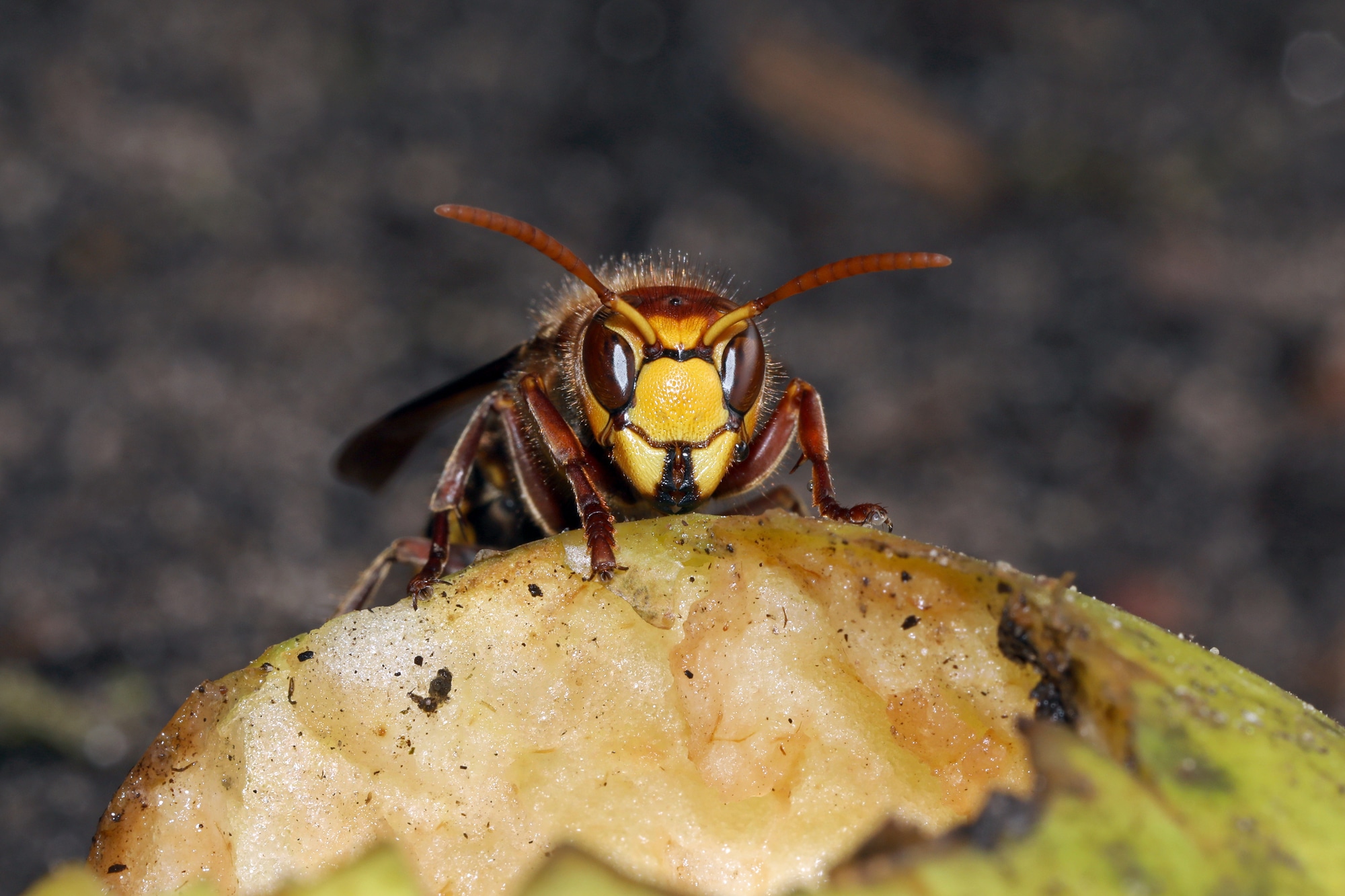The European hornet (scientific name Vespa crabro) is a large, black and yellow social wasp that can be easily identified due to its distinct yellow stripes.
The fearsome-looking hornet is not generally a very well-loved insect and is known for its painful stings (which are triggered when defending its nest). However, it’s also an important pollinator and pest controller for many reasons, so is often considered to be a gardener’s friend.
Types Of Hornets
European Hornet (Vespa Crabro)
Easily mistaken for the harmless hoverfly, the European hornet is one of the commonest of several types that nest in parts of Northern and Western Europe. Vespa crabro is a native hornet to regions generally lying between France and the Russian Federation. It can be found in parts of the south and central UK, Germany, Italy, Slovenia, Croatia, Austria, Romania and Bosnia and Herzegovina as well as Denmark. This very large relative of the common wasp has been found nesting in areas as far north as Sweden and Finland.

Asian Hornet (Vespa Velutina)
Mildly larger than the European hornet, the similar-looking Asian hornet has a brown thorax, and a mainly brown abdomen, except for one yellow segment. The Asian Hornet is a predatory, generalist social wasp native to East Asia. It preys on insects such as caterpillars and beetles and will also attack other insects, including honeybees. In addition, it feeds on nectar and fruit.
Asian hornets are considered an invasive species in Europe, even though they are important pollinators for plants and fruit trees. Since 2010, Asian hornet sightings have been observed in the Loire Valley in France, where they have killed about 20 million honeybees a year from colonies vulnerable to attacks by the hornets. Any Asian hornet UK sightings should be reported using the Asian Hornet Watch app.

Hornet Size
The European Hornet size is one of the largest in the world. They have a wingspan ranging between 11 and 16mm. The hornet queens are the ones that can be found growing to sizes as large as 1½ inches for their size. The Asian hornet size is similar to its European cousin and is around 1½ inches as well.
Hornet Diet
In terms of their diet, the European Hornet is considered to be a carnivore. This means that it will consume high energy substances such as plants and animals alike. They will be found feeding on nectar, pollen and animal sources such as honeydew. Being quite high up in their food chain, they are considered effective pest controllers as hornets catch and eat various insects.

Hornet Habitat
The European hornet lives in a wide variety of areas, from inside buildings to beneath rocks and even tree bark. They will also make their nests in holes that have been carved out by woodpeckers, on chimneys, beneath tiles, and in wall cavities near hot water pipes. Sometimes it’s not uncommon to see them nesting near or inside a birds nest as well.
Can Hornets Kill You?
So, what happens if you get stung by a hornet?
Hornets are a member of the wasp family, and, like most social wasps, they have stinging cells called “trichomes”. These cells are capable of injecting venom into their prey. The venom is immediately released from the stinger (and it’s quite powerful), which then injects its venom into any damage site on the victim. It’s not uncommon for people to get multiple stings in a short period.
The venom released is used to paralyze and liquefy the insides of insects. Contrary to popular belief, hornet venom is not severe to people, but it can lead to allergic reactions. People who have been stung have had swelling and redness around the sting site. These symptoms tend to last a few days at most. However, if you are not immunized against the toxin you’ve been stung by, you could become seriously ill from an allergic reaction or die if left untreated.
So yes, hornets can kill you if the sting triggers an allergic reaction (but it’s rare). Keep in mind; it takes more than one sting to do this (depending on your body’s reaction).

Hornets and Hibernation
Hornets are known to hibernate during the winter months. The hibernation process usually begins within the first two weeks of Autumn. Depending on the weather, they will either find a place to hide or simply get ready for their hibernation period.
A hornet will stop eating and potentially consume stored fat, so they can continue living off of it for an extended period of time. The newly mated queens will often add extra fat during this time to help produce new eggs.
The male hornets will wait until temperatures fall below about 20 degrees to begin hibernating, whereas female hornets will wait until it reaches about 15 degrees Celsius (60 Fahrenheit). Females hibernate in Autumn, while males will do so during the winter months. The female hornets preparing for hibernation will start producing eggs when they are a couple of weeks out. This is also when they will start storing fat to survive the winter, which can last anywhere from two to nine months, depending on the weather.
After mating and completing their egg production, male and female hornets hibernate deep inside their nests. Queen hornets emerge around springtime so they can begin building new nests.
Once they all emerge, the workers will start building their nests and raising their young and continue their vibrant lives throughout the warm months of summer.
Hornet Nest Building
The queens are the ones that will produce new nests and will do so by herself or with the help of a select few sterile workers. She can lay hundreds of eggs per day, and can lay up to 1,500 in her entire lifetime.
The queen hornets are the larger of the two. They will be blacker in colour, and their abdomen is generally more red in colour. Hornet queens are approximately 11% to 18% heavier than reproductive males.
The papery nests are usually built out of leaves, and other debris. The hornets create tunnels in hollow trees and in wall cavities to allow them to travel back and forth between the nest and their hunting grounds. Most nests are made in areas that get a high amount of sunlight around mid-day; however, there have been instances where they were found in areas that didn’t receive direct sunlight.

Hornet Life Cycle
The way hornets reproduce is quite interesting in that it allows them to multiply quickly. The process can be broken down into two separate stages; nest building and larval development.
During the first two weeks, the queen hornet will build her nest and find a small number of workers to help her. It’s these female workers that will spin the silk for the nest and gather the building materials. Once this has been done it’s left to the queen hornet to produce new eggs, which she does so for about ten days. The eggs hatch into larvae, and their purpose is to feed on other insects which come in through the entrance of their nests. Within about eight days after hatching, they transform into pupae before entering their final stages, being an adult hornet ready for its first flight.
Sources and References
- Know Your Hornets – wildlifetrusts.org
- What Is An Asian Hornet, What Does It Look Like & What Should I Do If I Come Across One? – barrettineenv.co.uk
Sam loves to learn about animals and their habitats. He has been a nature lover from a very young age, and has been writing papers and articles about wildlife for as long as he can remember.
